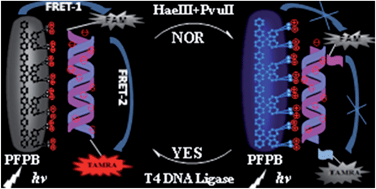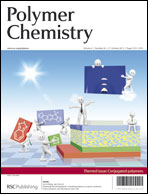Reversible logic gate modulated by nucleases based on cationic conjugated polymer/DNA assembly†
Abstract
Reversible logic gates were designed and prepared by modulating the logic inputs based on the original system combining new cationic polyfluorene PFPB with labelled dsDNA. The NOT, YES, and NOR logic gates were built with T4 ligase and restriction endonucleases such as HaeIII and PvuII as the inputs and the emission intensity of

- This article is part of the themed collection: Conjugated polymers

 Please wait while we load your content...
Please wait while we load your content...